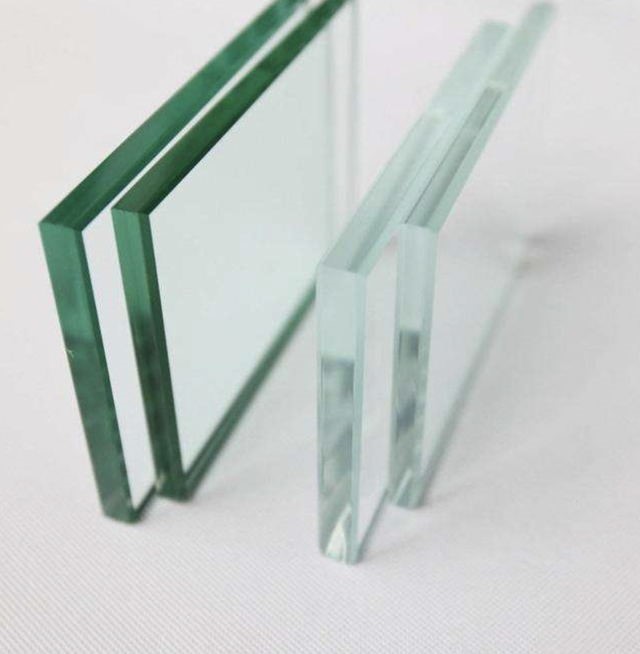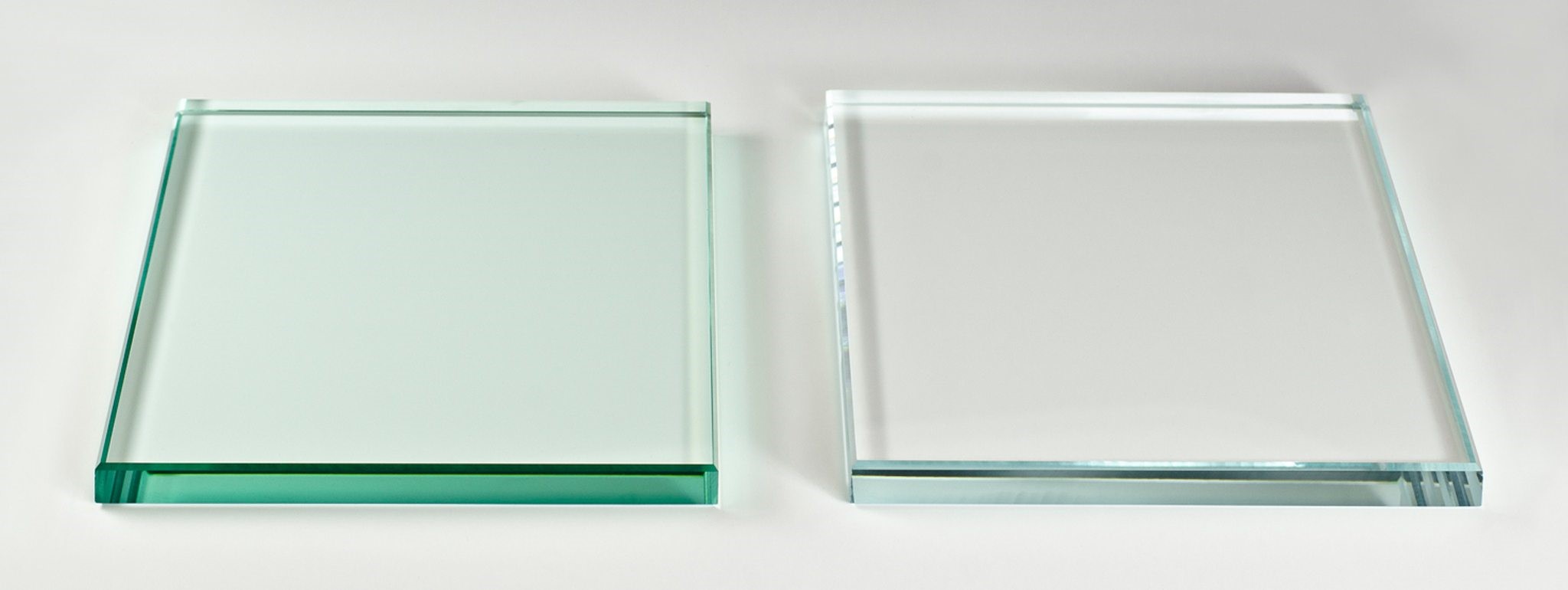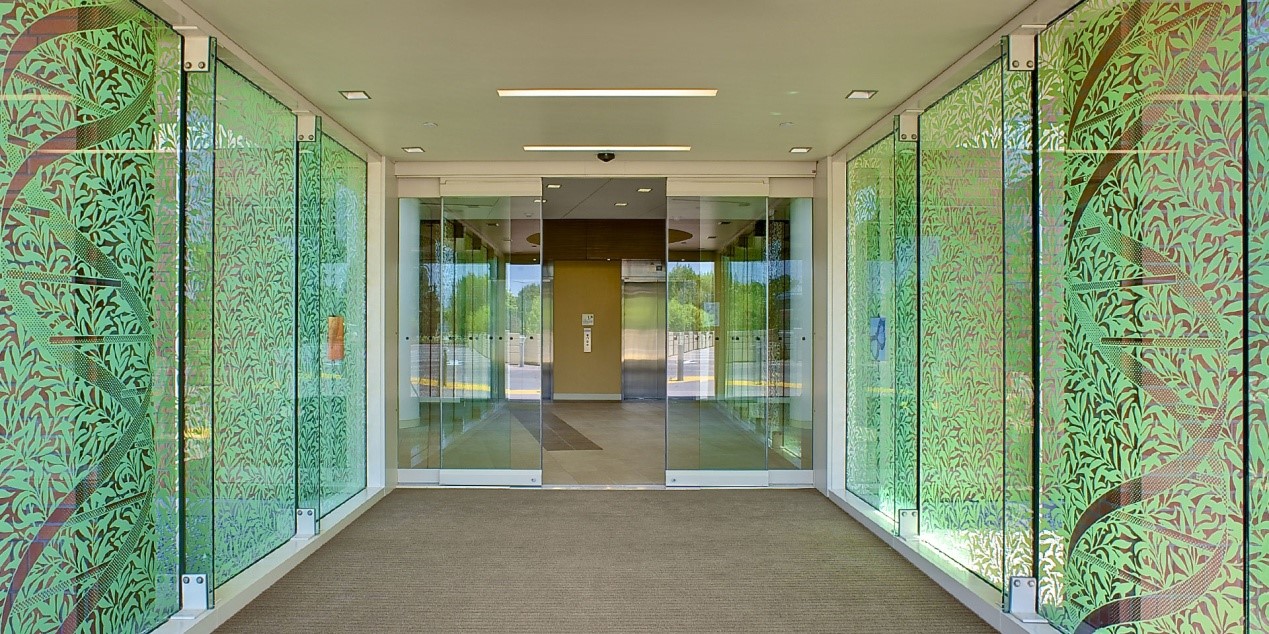The common transparent glass has a light green tint. This tint is more obvious when looking through several panes in a row (laminated) or even more so when looking at a pane from the side. This phenomenon is due to the iron content of the sand (the raw material for glass production).
The fact that this natural glass tint is in many cases undesirable has led glass technology to find ways to create a new kind of super-white glass.
It is a transparent glass where the original iron oxide content of the sand from which it is produced has been artificially reduced by up to 90%.
The result is a glass pane, which is free of the usual green tint and in addition shows extremely increased light and energy transmittance.
Low iron glass is an extremely transparent, low iron glass, also known as extra clear or ultra clear glass.



A table of the differences described is given below:
| Glass pane description | Light transmittance | Solar factor | Shading factor |
| 4mm Clear Glass | 90 | 0.99 | 0.86 |
| 4mm extra clear Glass | 91.4 | 1.05 | 0.91 |
| 8mm Clear Glass | 89 | 0.95 | 0.83 |
| 8mm extra clear Glass | 90.89 | 1.02 | 0.89 |
| 12 mm Clear Glass | 87 | 0.91 | 0.79 |
| 12mm extra clear Glass | 90.44 | 1.01 | 0.88 |
The most well-known applications of Transparent Glass are in: